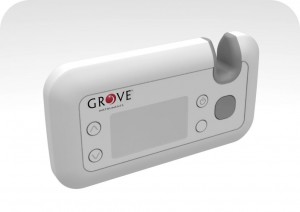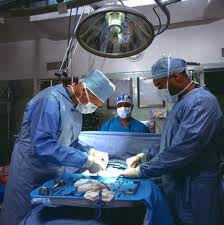Integrated Chemical Chip Could Control Muscle Movement
A new integrated chemical circuit could lead to an array of new applications in life sciences, as it could be used in vivo to regulate the signal paths of cells in the human body. Developed by Klas Tybrandt, doctoral student researching organic electronics at Linköping University (Sweden), the circuits transmit ions and molecules. The chip can work with common signaling substances such as acetylcholine. Potential applications include sending signals to muscle synapses with a malfunctioning signaling system. Tybrandt and Berggren began to develop ion transistors three years ago that can control and transport ions and charged biomolecules. That research was published in 2010 in Proceedings of the National Academy of Sciences in an article titled “Ion bipolar junction transistors.”http://www.nature.com/ncomms/journal/v3/n5/full/ncomms1869.html
Needle-free jet injection
Needle-free drug delivery by jet injection is achieved by ejecting a liquid drug through a narrow orifice at high pressure, thereby creating a fine high-speed fluid jet that can readily penetrate skin and tissue. A controllable jet injection device, based on a custom high-stroke linear Lorentz-force motor that is feed-back controlled during the course of an injection.The speed of the drug jet, injection depth (up to 16 mm) and precise volume (up to 250 μL) of drug delivered can be regulated. It may still take a few years before this or a related system is used widely, but there is hope that this type of technology will significantly reduce the dangerous number of occupational needle-stick injuries (estimated at over 385,000 in the US per year) as well as improve patient medication compliance.
http://www.sciencedirect.com/science/article/pii/S1350453311003249
Secure IV Catheter System
Tangent Medical out of Ann Arbor, MI recently unveiled its NovaCath Secure IV Catheter System, a device designed to improve peripheral IV catheter stabilization and reduce the potential for clinicians being exposed to patient blood. The closed system includes the catheter, high pressure extension tubing, multi-use flow control clamp and stabilization components. Designed to improve patient comfort and reduce overall IV complications including dislodgement, infiltration, phlebitis, and occlusion.http://medgadget.com/2012/05/tangent-shows-off-novacath-secure-iv-catheter.html
Smiths Medical’s ViaValve Safety I.V.
ViaValve Safety I.V. Catheter promises to help prevent blood exposure and needlestick injuries, which, each year, affect approximately 800,000 hospital-based healthcare workers in the U.S. by means of an integrated valve in the catheter hub. The valve provides blood control by impeding the backflow of blood from the patient’s vein upon initial venipuncture. ViaValve™ Safety I.V.Ultrasonic fog machine kills superbugs
Altapure LLC has launched a portable model of its ultrasonic sterilization device that kills pathogens in large areas like hospital operating and patient rooms. The machine’s technology, creates pressure waves at the surface of common liquid cleaning agents like peracetic acid or hydrogen peroxide and disperses a thick fog made up of sub-micron-sized droplets that spreads quickly throughout a room, clings to surfaces and eradicates harmful pathogens in seven to 10 minutes, a 100 percent kill rate in testing with medical-grade spores of geobacillus stearothermophilus and bacillus atrophaeus. The new model, the HJ-30i, delivers major breakthroughs in size, weight, performance flexibility and scalability.Altapure is located in South Bend, Indiana at Innovation Park.
A new rapid Bloodless glucometer

Grove Instruments’ Optical Bridge technology uses near-infrared spectroscopy to measure a person’s real-time blood sugar in less than 20 seconds. The company’s first product is an accessory-free, battery-operated personal glucose meter used on the fingertip or earlobe. Grove is one of several companies working on a noninvasive diabetes test using spectroscopy includingDIRAmed, C8 MediSensors and InLight Solutions. Challenges in developing devices using this technique have included water interference and low signal-to-noise ratio, but Grove thinks it has developed solutions to these problems.
Stent development company initiating clinical trial raises $8M

A stent development company has brought in $8 million in new investment for its second generation stent for cardiac surgery. The drug-eluting stent creates a low thrombogenic surface to reduce the possibility of blood clots. Its coating is designed to dissolve as the drug is delivered, lowering the chances of an inflammatory reaction from the coating.
The global stent market for the heart is estimated at $5 billion and the stent market for peripheral arteries, an area the company plans to move into, is about $500 million.